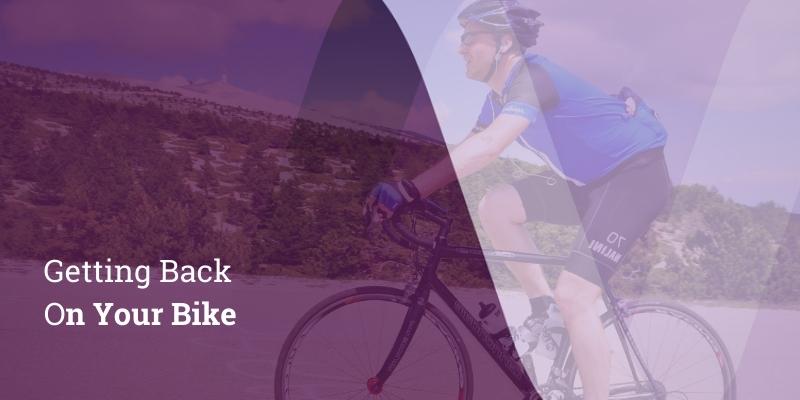
With the good weather upon us, cycling has become one of the most popular outdoor activities in spring. Its health benefits are numerous, such as improving muscle strength and endurance, reducing the risk of heart disease and stroke, and preventing obesity. Non-weight-bearing activities, including cycling, are an excellent way to strengthen the muscle and the lungs as well as being a good option if you have a musculoskeletal health condition, such as arthritis. However, cyclists often find themselves prone to injuries caused by a sustained suboptimal posture. Consultant Orthopaedic Surgeon, Professor Mo Imam, speaks to you about common cycling injuries, along with the prevention techniques and treatments available.
If you are a keen cyclist, you will be no stranger to bruises and minor cuts, followed by fractures, muscle strains, and sprains. However, serious injuries do occur. Specific chronic injuries or conditions can develop due to your prolonged awkward position required during road biking.
The most common upper limb Injuries seen in cyclists
Although knee and foot problems are fairly frequent in cyclists, according to a recent study that analysed Tour de France athletes’ injuries, upper limb fractures were the most common.
Injuries can be categorised into tendon, bone, joint and nerve-related problems:
- Tendons/Ligament
Tendinitis is an inflammation of the tendons, usually involving the hand tendons, which can be aggravated by gripping the handlebars and using the brake or gear pedals.
You might also experience other chronic conditions such as Lateral epicondylitis (Tennis elbow),and inflammation of your shoulder (rotator cuff) tendons and bursitis, which is an inflammation of the bursa or fluid-filled sac around the shoulders, hips, elbows or knees.
Subtle injuries to the wrist, including ligament tears between the small carpal bones, will require a thorough examination by a specialist to establish a diagnosis.
- Nerve related problems
Carpal tunnel syndrome, a compression neuropathy of the median nerve at the wrist, can be exacerbated by the prolonged hyperextension posture of your wrist during cycling.
- Joint related conditions
Osteoarthritis, particularly at the base of your thumb, is aggravated by hand positioning during cycling. Exacerbation of shoulder arthritis can also occur, especially if you maintain a poor posture whilst on your bike or a poor cycling technique.
- Bone related problems
The classic fracture discussed in cycling is the fracture of the collarbone or clavicle. This fracture occurs when the rider tumbles over the handlebars, and the resultant force on the arm and shoulder girdle leads to a break in this bone.
Fortunately, most clavicle fractures are treated conservatively with a sling. Still, fixing these fractures has become increasingly common to achieve the best result.
Wrist fractures are common too; the most commonly seen in the adult population is in the distal radius, which is the spongy bone portion of your forearm.
Other injuries you might encounter include the common scaphoid fracture. These smaller bones in your hand can be involved in trauma from a fall which often results in phalangeal and metacarpal fractures, but these tend to be less common. Complex elbow and shoulder fractures can happen too, and there is a significant variation in these patterns.
Surgical and non-surgical treatments for cycling injuries
Your arms serve many purposes. They help you to eat, dress, write, earn a living, and create art, amongst many other activities. Your hands produce sensations and promote movement in your shoulder and elbow joints, tendons, and muscles.
When you have a problem in your arm, care must be given to all of the different tissues so that your hands can function. Your injuries will be managed with different modalities, including non-surgical and surgical treatments.
Conservative treatment usually suffices for tendonitis and bursitis, including injections and physiotherapy. If the non-operative options fail, Arthroscopic (key-hole) or minimally invasive surgery can be your next option.
New fixation methods have revolutionised the treatment of fractures. These involve an anatomic correction of the displaced bone and placement of screws and plates to allow for a rapid recovery of function with essentially no long-term deficit.
A bespoke individualised approach will be recommended for you whilst your Consultant or Surgeon applies for evidence-based medicine.
Evidence-based medicine helps surgeons incorporate the best available scientific evidence into their individual patient care decisions. You can help make your healthcare experience safer by becoming active, involved, and informed, and you should actively engage with the different healthcare team members.
Common procedure for cycling injuries
There are a few options for treating cycling-related injuries. Advancements in surgical techniques include less invasive procedures. While each of the methods available has its advantages and disadvantages, all have the same goal: getting you to your pre-injury level.
The three reconstructive techniques most common for upper limb procedures include traditional open surgery, arthroscopic repair, and mini-open repair. There are also joint replacement options available.
All-Arthroscopic (Key-hole) Repair
Nowadays, this approach is undertaken for the majority of upper limb problems. During arthroscopy, your surgeon will insert a small camera called an arthroscope, into your joint that will display pictures on a television screen.
Because the arthroscope and surgical instruments are thin, your surgeon can use tiny incisions rather than the larger incision needed for standard, open surgery. All-Arthroscopic (Key-hole) Repair is usually a day case procedure and the least invasive method, so it is associated with quick recovery.
If your injury is large or complex, or if surgery is undertaken outside the joint, a traditional open surgical incision is often required. The mini-open repair uses newer technology and instruments to perform a repair through a small incision, typically 3 to 5 cm long.
Total Joint Replacement
In replacement surgery, the damaged parts of your joint will be removed and replaced with artificial components, called a prosthesis. The treatment options include replacing just one part of your joint (e.g. the head of the humerus bone, also known as the ball) or both sides of the joint, like replacing the ball and the socket (glenoid).
A common reason people have replacements is when a severe fracture is hard to reconstruct. When the head of your upper arm bone is shattered, the blood supply to your bone pieces can be interrupted. In this case, your surgeon may recommend a shoulder replacement—older patients with osteoporosis and patients with fractures involving arthritic joints are most at risk of severe shoulder fractures.
Tips for preventing upper limb cycling injuries
To minimise your risk of hand, wrist and other upper limb injuries while cycling this spring, here are a few helpful tips to get you on your way:
- Adjust your bicycle to fit your build/stature. Make sure that your bike is the proper size for you. Appropriately sized frames, handlebar and seat heights will improve your ability to control your bike and reduce your risk of injury. If you ride regularly, consider a professional fit from a bike shop, as this will decrease your risk of carpal tunnel syndrome.
- Change riding positions. Slight variations in your position can reduce overstressing muscles and pressure points on your body. It is essential to pay attention to how much weight you place on your hands, wrists and shoulders.
- Stretch. Exercisers are pressed to fit workouts into their busy schedules, and stretching is too often neglected. This common mistake can reduce the effectiveness of exercise because better flexibility results in better fitness. Increasing your flexibility will improve your ability to move around due to less muscle tension and an improved posture. Most importantly, stretching after each workout reduces your risk of injury.
If you are concerned about any pain or niggle in your wrist, hand or shoulder caused by intense cycling, you can speak to one of our specialist Orthopaedic Surgeons Call us on 020 8949 9020 or fill in our online form .












